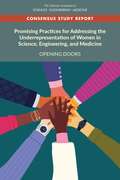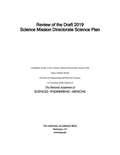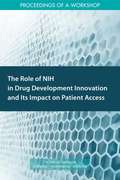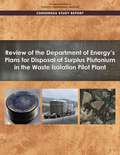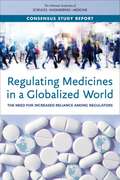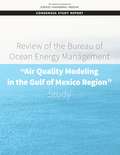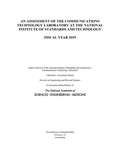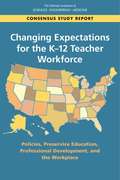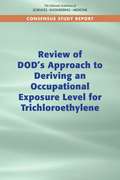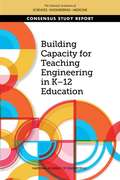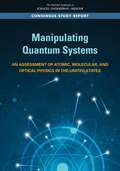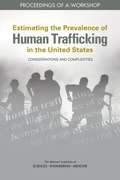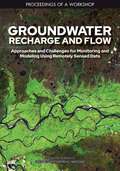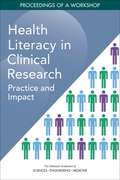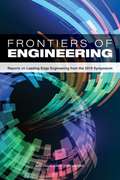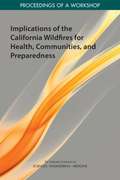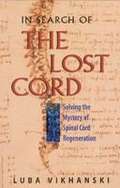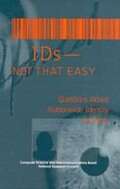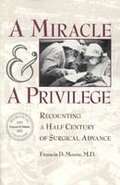- Table View
- List View
Promising Practices for Addressing the Underrepresentation of Women in Science, Engineering, and Medicine: Opening Doors
by National Academies of Sciences Engineering MedicineCareers in science, engineering, and medicine offer opportunities to advance knowledge, contribute to the well-being of communities, and support the security, prosperity, and health of the United States. But many women do not pursue or persist in these careers, or advance to leadership positions - not because they lack the talent or aspirations, but because they face barriers, including: implicit and explicit bias; sexual harassment; unequal access to funding and resources; pay inequity; higher teaching and advising loads; and fewer speaking invitations, among others. There are consequences from this underrepresentation of women for the nation as well: a labor shortage in many science, engineering, and medical professions that cannot be filled unless institutions and organizations recruit from a broad and diverse talent pool; lost opportunities for innovation and economic gain; and lost talent as a result of discrimination, unconscious bias, and sexual harassment. Promising Practices for Addressing the Underrepresentation of Women in Science, Engineering, and Medicine reviews and synthesizes existing research on policies, practices, programs, and other interventions for improving the recruitment, retention, and sustained advancement into leadership roles of women in these disciplines. This report makes actionable recommendations to leverage change and drive swift, coordinated improvements to the systems of education, research, and employment in order to improve both the representation and leadership of women.
Review of the Draft 2019 Science Mission Directorate Science Plan
by National Academies of Sciences Engineering MedicineNASA’s Science Mission Directorate (SMD) ties together diverse researchers, sponsors, and resources to develop the science community’s understanding of the universe. Within scientific organizations like NASA, it is important to establish clear strategies and goals to guide research and foster new discoveries across varying missions. SMD created a draft for their 2019 Science Plan, and a review of this draft is necessary to ensure that the plan establishes clear, attainable, relevant, and ambitious goals. Review of the Draft 2019 Science Mission Directorate Science Plan provides comments on and recommendations for SMD’s draft. Comments in this report focus on the level of ambition of the specified strategies in light of current and emerging opportunities to advance Earth and space science over the next 5 years, the ability of SMD to meet the science objectives in the most recent decadal surveys through implementation of specified strategies, additional strategies for SMD’s considerations, and the general readability and clarity of the draft. Recommendations in this report identify important improvements for the 2019 Science Plan.
Privacy and Security in the 21st Century: Who Knows And Who Controls?: Proceedings Of A Forum
by National Academy of EngineeringNew technologies and capabilities, such as Google Cloud and artificial intelligence, are changing the world at an unprecedented rate. A transition to cloud computing offers a variety of benefits, including worldwide access and faster networks. This digital transformation also presents an array of new challenges. The privacy and security of these systems is one of the most discussed subjects of the current century. The theme of the National Academy of Engineering Annual Meeting on September 30th and October 1st, 2018 was privacy and security in the 21st century. Topics of discussion included new security regulations and procedures to mitigate the new range of threats that this era presents. Understanding privacy in new digital contexts and building security into systems with the use of artificial intelligence are necessary steps in order to protect our data in the future. This publication summarizes the presentations and discussions from the forum.
The Role of NIH in Drug Development Innovation and Its Impact on Patient Access: Proceedings Of A Workshop
by National Academies of Sciences Engineering MedicineTo explore the role of the National Institutes of Health (NIH) in innovative drug development and its impact on patient access, the Board on Health Care Services and the Board on Health Sciences Policy of the National Academies jointly hosted a public workshop on July 24–25, 2019, in Washington, DC. Workshop speakers and participants discussed the ways in which federal investments in biomedical research are translated into innovative therapies and considered approaches to ensure that the public has affordable access to the resulting new drugs. This publication summarizes the presentations and discussions from the workshop.
Biological Collections: Ensuring Critical Research And Education For The 21st Century
by National Academies of Sciences, Engineering, and Medicine Division on Earth and Life Studies Board on Life Sciences Committee on Biological Collections: Their Past, Present, and Future Contributions and Options for Sustaining ThemBiological collections are a critical part of the nation's science and innovation infrastructure and a fundamental resource for understanding the natural world. Biological collections underpin basic science discoveries as well as deepen our understanding of many challenges such as global change, biodiversity loss, sustainable food production, ecosystem conservation, and improving human health and security. They are important resources for education, both in formal training for the science and technology workforce, and in informal learning through schools, citizen science programs, and adult learning. However, the sustainability of biological collections is under threat. Without enhanced strategic leadership and investments in their infrastructure and growth many biological collections could be lost. Biological Collections: Ensuring Critical Research and Education for the 21st Century recommends approaches for biological collections to develop long-term financial sustainability, advance digitization, recruit and support a diverse workforce, and upgrade and maintain a robust physical infrastructure in order to continue serving science and society. The aim of the report is to stimulate a national discussion regarding the goals and strategies needed to ensure that U.S. biological collections not only thrive but continue to grow throughout the 21st century and beyond.
Review of the Department of Energy’s Plans for Disposal of Surplus Plutonium in the Waste Isolation Pilot Plant
by National Academies of Sciences Engineering MedicineIn 2018, the National Academies of Sciences, Engineering, and Medicine issued an Interim Report evaluating the general viability of the U.S. Department of Energy’s National Nuclear Security Administration’s (DOE-NNSA’s) conceptual plans for disposing of 34 metric tons (MT) of surplus plutonium in the Waste Isolation Pilot Plant (WIPP), a deep geologic repository near Carlsbad, New Mexico. It provided a preliminary assessment of the general viability of DOE-NNSA’s conceptual plans, focused on some of the barriers to their implementation. This final report addresses the remaining issues and echoes the recommendations from the interim study.
Regulating Medicines in a Globalized World: The Need For Increased Reliance Among Regulators
by National Academies of Sciences Engineering MedicineGlobalization is rapidly changing lives and industries around the world. Drug development, authorization, and regulatory supervision have become international endeavors, with most medicines becoming global commodities. Drug companies utilize global supply chains that often include facilities in countries with inconsistent regulations from those of the United States, perform pivotal trials in multiple countries to support registration submissions in various jurisdictions, and subsequently market their medicines throughout most of the world. These companies operate across borders and require individual national regulators to ensure that drugs authorized for use in their countries are safe and effective, and appropriate for their health care system and their population. This process involves significant resources and often duplicative work. It is important to consider how this process can be improved in order to better allocate resources, time, and efforts to improve public health. Regulating Medicines in a Globalized World: The Need for Increased Reliance Among Regulators considers the role of mutual recognition and other reliance activities among regulators in contributing to enhancing public health. This report identifies opportunities for leveraging reliance activities more broadly in order to potentially impact public health globally. Key topics in this report include the job of medicines regulators in today’s world, what policy makers need to know about today’s regulatory environment, stakeholder views of recognition and reliance, as well as removing impediments and facilitating action for greater recognition and reliance among regulatory authorities.
Review of the Bureau of Ocean Energy Management "Air Quality Modeling in the Gulf of Mexico Region" Study
by National Academies of Sciences Engineering MedicineEmissions associated with oil and gas exploration, development, and production on the Gulf waters can result in increased levels of air pollutants that contribute to a range of air quality impacts in the Gulf of Mexico Region (GOMR). “Criteria air pollutants”, such as carbon monoxide, lead, nitrogen dioxide, ozone, particulate matter, and sulfur dioxide, are considered harmful to public health and the environment. The Bureau of Ocean Energy Management (BOEM) manages the U.S. outer continental shelf oil and gas resources and is required to help manage air quality in the GOMR. Review of the Bureau of Ocean Energy Management “Air Quality Modeling in the Gulf of Mexico Region” Study reviews and provides feedback on the BOEM’s Air Quality Modeling in the Gulf of Mexico Region Study. This independent technical review of the study explores whether the study meets its goals, accurately reflects the scientific literature, uses reasonable data and modeling analyses, approaches quantitative modeling appropriately, documents findings in a consistent, transparent, and credible way, and aligns with necessary guidelines.
An Assessment of the Communications Technology Laboratory at the National Institute of Standards and Technology: Fiscal Year 2019
by National Academies of Sciences Engineering MedicineAn Assessment of the Communications Technology Laboratory at the National Institute of Standards and Technology: Fiscal Year 2019 is an independent technical assessment of the quality of the National Institute of Standards and Technology's (NIST's) Communications Technology Laboratory (CTL). It reviews the organization's technical programs, the portfolio of scientific expertise within the organization, the adequacy of the organization's facilities, equipment, and human resources, and the effectiveness by which the organization disseminates its program outputs. This report focuses on CTL priority areas such as public safety communications, trusted spectrum testing, and Next Generation Wireless (5G and Beyond). It also assesses the extent to which CTL applied the recommendations from a 2015 National Academies' report, which describes many of the critical uses of radio communications, provides lab-specific recommendations, and highlights important research priorities for the Boulder, Colorado communications technology laboratory of the Department of Commerce laboratory. This new report also describes the current activities of the Boulder telecommunications laboratories, its strengths and weaknesses as an organization, and its plans for the near future
Changing Expectations for the K–12 Teacher Workforce: Policies, Preservice Education, Professional Development, And The Workplace
by National Academies of Sciences Engineering MedicineTeachers play a critical role in the success of their students, both academically and in regard to long term outcomes such as higher education participation and economic attainment. Expectations for teachers are increasing due to changing learning standards and a rapidly diversifying student population. At the same time, there are perceptions that the teaching workforce may be shifting toward a younger and less experienced demographic. These actual and perceived changes raise important questions about the ways teacher education may need to evolve in order to ensure that educators are able to meet the needs of students and provide them with classroom experiences that will put them on the path to future success. Changing Expectations for the K–12 Teacher Workforce: Policies, Preservice Education, Professional Development, and the Workplace explores the impact of the changing landscape of K–12 education and the potential for expansion of effective models, programs, and practices for teacher education. This report explores factors that contribute to understanding the current teacher workforce, changing expectations for teaching and learning, trends and developments in the teacher labor market, preservice teacher education, and opportunities for learning in the workplace and in-service professional development.
Review of DOD’s Approach to Deriving an Occupational Exposure Level for Trichloroethylene
by National Academies of Sciences Engineering MedicineTrichloroethylene (TCE) is a solvent that is used as a degreasing agent, a chemical intermediate in refrigerant manufacture, and a component of spot removers and adhesives. It is produced in mass quantities but creates dangerous vapors and is an environmental contaminant at many industrial and government facilities, including facilities run by the U.S. Department of Defense (DoD). It is important to determine the safe occupational exposure level (OEL) for the solvent in order to protect the health of workers who are exposed to its vapors. However, there are concerns that the current occupational standards insufficiently protect workers from these health threats. Review of DOD’s Approach to Deriving an Occupational Exposure Level for Trichloroethylene makes recommendations to improve the DoD’s approach to developing an OEL for TCE, strengthen transparency of the process, and improve confidence in the final OEL value. This report reviews the DoD’s approach using a literature review, evidence synthesis based on weight of evidence [WOE], point-of-departure derivation, physiologically based pharmacokinetic modeling, extrapolation tools, and explores other elements of the process of deriving an OEL for TCE. It examines scientific approaches to developing exposure values and cancer risk levels, defining the scope of the problem, and improving hazard identification.
Assessment of the In-House Laboratory Independent Research at the Army’s Research, Development, and Engineering Centers
by National Academies of Sciences Engineering MedicineThis report evaluates the In-House Laboratory Independent Research (ILIR) conducted at the Research, Development, and Engineering Centers (RDECs) of the U.S. Army’s Research, Development, and Engineering Command (RDECOM) during 2018. It reviews and offers recommendations for each of the eight areas of ILIR research: chemistry, computational sciences, electronics, life sciences, materials science, mechanical sciences, network sciences, and physics.
Building Capacity for Teaching Engineering in K-12 Education
by National Academies of Sciences Engineering MedicineEngineering education is emerging as an important component of US K-12 education. Across the country, students in classrooms and after- and out-of-school programs are participating in hands-on, problem-focused learning activities using the engineering design process. These experiences can be engaging; support learning in other areas, such as science and mathematics; and provide a window into the important role of engineering in society. As the landscape of K-12 engineering education continues to grow and evolve, educators, administrators, and policy makers should consider the capacity of the US education system to meet current and anticipated needs for K-12 teachers of engineering. Building Capacity for Teaching Engineering in K-12 Education reviews existing curricula and programs as well as related research to understand current and anticipated future needs for engineering-literate K-12 educators in the United States and determine how these needs might be addressed. Key topics in this report include the preparation of K-12 engineering educators, professional pathways for K-12 engineering educators, and the role of higher education in preparing engineering educators. This report proposes steps that stakeholders - including professional development providers, postsecondary preservice education programs, postsecondary engineering and engineering technology programs, formal and informal educator credentialing organizations, and the education and learning sciences research communities - might take to increase the number, skill level, and confidence of K-12 teachers of engineering in the United States.
Manipulating Quantum Systems: An Assessment Of Atomic, Molecular, And Optical Physics In The United States
by Division on Engineering and Physical Sciences Board on Physics and Astronomy National Academies of Sciences, Engineering, and Medicine Committee on Decadal Assessment and Outlook Report on Atomic, Molecular, and Optical ScienceThe field of atomic, molecular, and optical (AMO) science underpins many technologies and continues to progress at an exciting pace for both scientific discoveries and technological innovations. AMO physics studies the fundamental building blocks of functioning matter to help advance the understanding of the universe. It is a foundational discipline within the physical sciences, relating to atoms and their constituents, to molecules, and to light at the quantum level. AMO physics combines fundamental research with practical application, coupling fundamental scientific discovery to rapidly evolving technological advances, innovation and commercialization. Due to the wide-reaching intellectual, societal, and economical impact of AMO, it is important to review recent advances and future opportunities in AMO physics. Manipulating Quantum Systems: An Assessment of Atomic, Molecular, and Optical Physics in the United States assesses opportunities in AMO science and technology over the coming decade. Key topics in this report include tools made of light; emerging phenomena from few- to many-body systems; the foundations of quantum information science and technologies; quantum dynamics in the time and frequency domains; precision and the nature of the universe, and the broader impact of AMO science.
Necessary DoD Range Capabilities to Ensure Operational Superiority of U.S. Defense Systems: Testing for the Future Fight
by National Academies of Sciences, Engineering, and Medicine Division on Engineering and Physical Sciences Board on Army Research and Development Committee on Assessing the Physical and Technical Suitability of DoD Test and Evaluation Ranges and InfrastructureRigorous operational testing (OT) of weapon systems procured by the U.S. Department of Defense (DoD) is fundamental to ensuring that these sophisticated systems not only meet their stated requirements, but also perform under realistic operational conditions when faced by determined adversaries employing their own highly capable offensive and defensive weaponry. DoD's test and training range enterprise provides the geography, infrastructure, technology, expertise, processes, and management that make safe, secure, and comprehensive OT possible. The challenges facing the nation's range infrastructure are both increasing and accelerating. Limited test capacity in physical resources and workforce, the age of test infrastructure, the capability to test advanced technologies, and encroachment impact the ability to inform system performance, integrated system performance and the overall pace of testing. Necessary DoD Range Capabilities to Ensure Operational Superiority of U.S. Defense Systems assesses the physical and technical suitability of DoD test and evaluation ranges, infrastructure, and tools for determining the operational effectiveness, suitability, survivability, and lethality of military systems. This report explores modernization, sustainment, operations, and resource challenges for test and evaluation ranges, and makes recommendations to put the DoD range enterprise on a modernization trajectory to meet the needs of OT in the years ahead.
Estimating the Prevalence of Human Trafficking in the United States: Proceedings Of A Workshop
by National Academies of Sciences Engineering MedicineHuman trafficking has many names and can take many forms - pimp control, commercial sex, exploitation, forced labor, modern slavery, child labor, and several others - and the definitions vary greatly across countries and cultures, as well as among researchers. In the United States, the Trafficking Victims Protection Act (TVPA) is the cornerstone of counter-trafficking efforts. It provides guidance for identifying and defining human trafficking, and it authorizes legislation and appropriations for subsequent counter-trafficking measures both within and outside of the federal government. First enacted in 2000, the TVPA has since been reauthorized by three administrations, and it includes a directive for the President to establish an Interagency Task Force to Monitor and Combat Trafficking. The subsequent Frederick Douglass Trafficking Victims Prevention and Protection Reauthorization Act of 2018 also includes provisions for victim services and plans to enhance collaboration efforts to fight trafficking abroad. To explore current and innovative sampling methods, technological approaches, and analytical strategies for estimating the prevalence of sex and labor trafficking in vulnerable populations, a 2-day public workshop, Approaches to Estimating the Prevalence of Human Trafficking in the United States, was held in Washington, D.C. in April 2019. The workshop brought together statisticians, survey methodologists, researchers, public health practitioners, and other experts who work closely with human trafficking data or with the survivors of trafficking. Participants addressed the current state of research on human trafficking, advancements in data collection, and gaps in the data. They discussed international practices and global trends in human trafficking prevalence estimation and considered ways in which collaborations across agencies and among the U.S. government and private-sector organizations have advanced counter-trafficking efforts. This proceedings summarizes the presentations and discussions of the workshop.
Groundwater Recharge and Flow: Approaches and Challenges for Monitoring and Modeling Using Remotely Sensed Data: Proceedings of a Workshop
by National Academies of Sciences Engineering MedicineWater of appropriate quantity and quality is essential for drinking, sanitation, and food, energy, and industrial production for any society and is derived for most needs from surface- or groundwater sources. Studies suggest that groundwater use in irrigation globally is increasing in total volume as well as a percentage of all water used for irrigation, with the demand for groundwater resources increasing as available primary surface water supplies are depleted. Particularly in arid regions, groundwater may be the most accessible water supply for any purpose, leaving groundwater withdrawals concentrated in areas that are already experiencing water stress. Even in the presence of direct ground observations and measurements of the water table, quantitative evaluation of groundwater storage, flow, or recharge at different scales requires remotely sensed data and observations applied to groundwater models. Resolving the interaction of groundwater storage, flow, and recharge at a scale at which basins are managed requires remotely sensed data and proxy data. In June 2019, the Water Science and Technology Board of the National Academies of Sciences, Engineering, and Medicine convened a workshop to identify scientific and technological research frontiers in monitoring and modeling groundwater recharge and flow in various regions of the world. The goals of the workshop were to assess regional freshwater budgets under major use scenarios, including agriculture, industry, and municipal; examine state of the art research frontiers in characterizing groundwater aquifers, including residence time, quantity, flow, depletion, and recharge, using remotely sensed observations and proxy data; discuss groundwater model uncertainties and methods for mitigating them using sparse ground observations or data and other approaches; and consider our ability to detect which water management strategies that affect groundwater flow and recharge are being used and any changes in their use over time. This publication summarizes workshop presentations and plenary discussions.
Health Literacy in Clinical Research: Practice And Impact: Proceedings Of A Workshop
by National Academies of Sciences, Engineering, and Medicine Health and Medicine Division Board on Population Health and Public Health Practice Roundtable on Health LiteracyBecause of the individualized nature of drug and therapeutic treatments, clinical trials require participants who represent the diversity of the patient base. If early trials do not have a broad patient base, it can be difficult to know who may or may not benefit from or respond to a treatment later. In addition to diversity in recruitment, informed consent during participation is also crucial. If participants do not fully understand what they are signing up for, they may become confused, mistrustful, or drop out of a trial altogether, confusing investigators and possibly affecting the generalizability of a study. To explore the incorporation of health literacy practices into clinical trials, the Roundtable on Health Literacy convened a workshop titled Clinical Trials: Practice and Impact on April 11, 2019, in Washington, DC. The workshop presentations and discussion centered around issues related to the challenges or barriers for diverse populations' participation in clinical trials, best practices for clinical trial sites and researchers incorporating health literacy practices, and effective health literacy strategies for clear communication with participants. This publication summarizes the presentation and discussion of the workshop.
Frontiers of Engineering: Reports On Leading-edge Engineering From The 2019 Symposium
by National Academy of EngineeringThis volume of Frontiers of Engineering presents papers on the topics covered at the National Academy of Engineering’s 2019 US Frontiers of Engineering Symposium, hosted by Boeing in North Charleston, South Carolina, September 25-27. At the annual 2 1/2-day event, 100 of this country’s best and brightest early-career engineers - from academia, industry, and government and a variety of engineering disciplines - learn from their peers about pioneering work in different areas of engineering. Frontiers of Engineering conveys the excitement of this unique meeting and highlights innovative developments in engineering research and technical work.
Implications of the California Wildfires for Health, Communities, and Preparedness: Proceedings Of A Workshop
by National Academies of Sciences, Engineering, and Medicine Health and Medicine Division Board on Population Health and Public Health Practice Board on Health Sciences Policy Roundtable on Environmental Health Services, Research, and Medicine Roundtable on the Promotion of Health Equity Roundtable on Population Health Improvement Forum on Medical and Public Health Preparedness for Disasters and EmergenciesCalifornia and other wildfire-prone western states have experienced a substantial increase in the number and intensity of wildfires in recent years. Wildlands and climate experts expect these trends to continue and quite likely to worsen in coming years. Wildfires and other disasters can be particularly devastating for vulnerable communities. Members of these communities tend to experience worse health outcomes from disasters, have fewer resources for responding and rebuilding, and receive less assistance from state, local, and federal agencies. Because burning wood releases particulate matter and other toxicants, the health effects of wildfires extend well beyond burns. In addition, deposition of toxicants in soil and water can result in chronic as well as acute exposures. On June 4-5, 2019, four different entities within the National Academies of Sciences, Engineering, and Medicine held a workshop titled Implications of the California Wildfires for Health, Communities, and Preparedness at the Betty Irene Moore School of Nursing at the University of California, Davis. The workshop explored the population health, environmental health, emergency preparedness, and health equity consequences of increasingly strong and numerous wildfires, particularly in California. This publication is a summary of the presentations and discussion of the workshop.
Astronomy and Astrophysics in the New Millennium
by National Research CouncilIn this new book, a distinguished panel makes recommendations for the nation's programs in astronomy and astrophysics, including a number of new initiatives for observing the universe. With the goal of optimum value, the recommendations address the role of federal research agencies, allocation of funding, training for scientists, competition and collaboration among space facilities, and much more.The book identifies the most pressing science questions and explains how specific efforts, from the Next Generation Space Telescope to theoretical studies, will help reveal the answers. Discussions of how emerging information technologies can help scientists make sense of the wealth of data available are also included.Astronomy has significant impact on science in general as well as on public imagination. The committee discusses how to integrate astronomical discoveries into our education system and our national life.In preparing the New Millennium report, the AASC made use of a series of http://www.nap.edu/catalog/9840.htmlpanel reports that address various aspects of ground- and space-based astronomy and astrophysics. These reports provide in-depth technical detail. http://www.nap.edu/catalog/10314.htmlAstronomy and Astrophysics in the New Millenium: An Overview summarizes the science goals and recommended initiatives in a short, richly illustrated, non-technical booklet.
IN SEARCH OF THE LOST CORD: Solving the Mystery of Spinal Cord Regeneration
by Luba VikhanskiIn Search of the Lost Cord is a scientific detective story, the stuff of science fiction en route to science fact. People trapped by the limitation of paralyzed limbs, rendered useless by devastating, catastrophic injuries to their spinal cords, may one day walk again. If the research is successful . . . if the scientists hit on the right strategy for approaching the problem, we may yet see miracles happen.In her new book, science journalist Luba Vikhanski profiles the rapidly developing field of spinal cord injury research. She explains the field’s greatest scientific challenges and introduces us to the pioneers who are working toward what would be a startling breakthrough. Perhaps the most riveting aspect of this international effort is the fact that each of these scientists is approaching the problem in very different ways. In the worldwide race to claim the prize of a cure, we witness a drama in the making.Who will cross the finish line first? Will it be the Swiss scientist Martin Schwab, who has actually managed to heal spinal cords in rats and has restored their ability to walk? Will it be Wise Young, a Rutgers scientist who is pinning his research hopes on drug therapies? Or could Lars Olson of the Swedish Karolinska Institute hold the key to success in his efforts to construct a bridge of slender nerve filaments to connect a once-severed spinal cord? His rats are already flexing their legs.These scientists, and others with unique and creative approaches of their own, have dared to tackle this seemingly unsolvable problem of spinal cord regeneration. Like all major medical and scientific breakthroughs, the “Eureka” moment often seems obvious in hindsight. Perhaps we’ll have the same perspective when the puzzle of spinal cord regeneration is solved and the nerves are indeed healed. Until that time, there’s a race to the finish line, and suspense is building. In Search of the Lost Cord is a trackside seat.
SWORDS INTO MARKET SHARES: Technology, Economics, and Security in the New Russia
by Glenn E. SchweitzerWhile researching this book, Glenn Schweitzer met four Moscow physicists who were trying to license Russian technology to western firms for product manufacture. During the worst times, they were reduced to driving taxis to keep things afloat. He asked them, will technological innovation have a discernible impact on the Russian economy in the coming decade? No, was the immediate reply. Are they right?In Swords into Market Shares, Schweitzer examines the roots of such pessimism and the prospects for Russia to prosper from its technology in the post-Soviet world. He explores the different visions of prosperity held by entrepreneurs, technologists, and government officials and goes on to examine the barriers to progress as Russia struggles to build a viable technology industry on its own terms. In accessible language, this book talks about technology's place within Russia's economy and its research and development infrastructure. Schweitzer looks at the impact of the Soviet legacy--central planning, lack of priorities, scant incentives for personal initiative--and the aftermath of the Russian financial meltdown of 1998.He also reviews the experiences of American companies that have invested in Russian technology and examines the results of pressure to reform according to the economic model of the West. Schweitzer goes on to document the problems of economic crime and government corruption, which plague activities designed to generate income in Russia. He discusses the lack of protection for intellectual property and taxation issues that stand in the way of technological innovation. The book looks at the impact of the "brain drain" as Russian experts seek greener pastures--not only the ominous recruitment of Russian biological weapons experts and the acquisition of military technology by "rogue" nations--but also Russia's own program to sell military technology for badly needed funds.Schweitzer's use of case studies and examples puts a human face on these issues. He also discusses Russia's 60 "science cities"--sites of state research centers--with close-ups of three "nuclear cities."Can the technical strengths of the Soviet military complex find a place in civilian Russia? How can this vast country sustain even a minimal standard of living? Swords into Market Shares addresses these and other key questions and explores fundamental policy issues confronting both Russia and the United States as Russia struggles for an economic foothold.
IDs--Not That Easy: Questions About Nationwide Identity Systems
by National Research CouncilIDs--Not That Easy highlights some of the challenging policy, procedural, and technological issues presented by nationwide identity systems. In the wake of the events of September 11, 2001, nationwide identity systems have been proposed to better track the movement of suspected terrorists. However, questions arise as to who would use the system and how, if participation would be mandatory, the type of data that would be collected, and the legal structures needed to protect privacy. The committee's goal is to foster a broad and deliberate discussion among policy-makers and the public about the form of nationwide identity system that might be created, and whether such a system is desirable or feasible.
A Miracle and A Privilege: RECOUNTING A HALF CENTURY OF SURGICAL ADVANCE
by Francis D. MooreFrancis Moore entered Harvard Medical School in September of 1935, seven years before penicillin became available. During his remarkable career in surgery, research, and education, Moore has witnessed and contributed to some of the most important biomedical advances of the century, and his students now practice surgery worldwide. In this autobiography, he brings humor and warmth to the story of a lifetime at the forefront of medicine.In this fascinating book Moore describes his work in radioactive isotope research, burn therapy, breast cancer treatment, transplant science, and understanding the process of convalescence.Moore's colleagues have included such medical pioneers as George Thorn, David Hume, Thomas Starzl, John Gibbon, Steven Rosenberg, Harold Urey, and Nobel Prize winner Joseph Murray, and he recounts the setbacks and victories of their work. For example, he writes of the adventure he had with Charles Hufnagel in which 25 dogs, implanted with Hufnagel's experimental heart valves, made their escape into the Connecticut countryside and had to be recovered by dog control officers wielding stethoscopes.Yet Moore recalls with equal clarity the young mother who gave him a silver dollar for delivering her baby, the husband who begged that his ailing wife be allowed to die with dignity, and the desperately sick patients who made themselves available for experimental surgery and treatment. In one of his early operations he relieved "the pain, anguish, and threat to a wonderful small boy" by removing the boy's diseased appendix. He describes this capability as "a miracle and a privilege."The book includes a gripping account of the aftermath of the Cocoanut Grove nightclub fire in Boston in 1942, when Moore learned the horrific details of death by fire. He recounts both his experience with M.A.S.H. units and battalion aid stations in Korea and the sudden request from the U.S. State Department that resulted in his treating King Ibn Saud of Saudi Arabia.Moore's life story reflects his serious commitment to human well-being as well as his appreciation for the wonder of human life. Physicians, medical students, and all readers alike will find this book informative and inspirational.Francis Daniels Moore, M.D., is Moseley Professor of Surgery, Emeritus, Harvard Medical School and Surgeon-in-Chief, Emeritus, Peter Bent Brigham Hospital, Boston.
